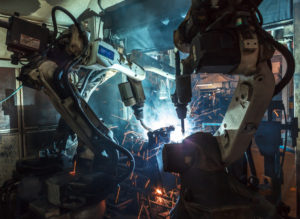Since 2014, qualified companies have been eligible for a partial exemption from sales tax for purchases of machinery and equipment used in qualified manufacturing and research and development activities. California was late to the table, as most states have long had exemptions for such purchases. The exemption has also been unique in that it has been a partial exemption, and allowable only on the first $200 million of qualified purchases.
Now, Assembly Bill 1951 would expand the exemption to a full exemption (rather than partial). According to the legislative language, “This bill would on and after January 1, 2023, and before January 1, 2028 make this a full exemption for purchases not exceeding $200,000,000. The bill would repeal these provisions on January 1, 2028 and would revert to the above-described partial exemption on that date.”
So, why make these changes now? As the bill points out:
(a) Businesses conducting manufacturing or research and development activities are essential to the economic well-being of the state of California and provide high-wage jobs for Californians. In recent years, many of these businesses have chosen to relocate operations to lower cost jurisdictions or expand outside of California.
(b) California has the highest state-level sales tax rate among the 50 states in the United States, and once local rates are accounted for, sales and use tax rates in California can reach up to 10.75 percent.
(c) Thirty-eight states fully exempt manufacturing equipment from sales and use tax. With California’s current partial exemption, taxpayers pay more to buy equipment in California than they would elsewhere, creating a competitive disadvantage for the state.
(d) It is the intent of the Legislature to expand the sales and use tax exemption for manufacturing and research and development equipment to preserve California’s status as a hub of innovation and technology and encourage greater investment in California.
How to Qualify for the Exemption
As we’ve reported previously, in order to be eligible for the exemption, you must meet all three of the following conditions:
Be engaged in certain types of business. Also known as a “qualified person” who engages 50% or more of the time in manufacturing or research and development activities. Generally, this includes business in all forms of manufacturing, research and development in biotechnology, and research and development in physical, engineering and life sciences.
- A “Qualified person” is defined as a person that is primarily engaged in those lines of business described in Codes 3111 to 3399, inclusive, 221111 to 221118, inclusive, 221122, 541711, or 541712 of the North American Industry Classification System (NAICS) published by the United States Office of Management and Budget (OMB), 2012 edition.
Purchase “qualified tangible personal property”. For example, if you made purchases such as machinery and equipment, computers, data-processing equipment, computer software or tangible personal property used in pollution then you have made a purchase of qualified tangible personal property.
“Qualified tangible personal property” includes, but is not limited to, all of the following:
- Machinery and equipment, including component parts and contrivances such as belts, shafts, moving parts, and operating structures.
- Equipment or devices used or required to operate, control, regulate, or maintain the machinery, including, but not limited to, computers, data processing equipment, and computer software, together with all repair and replacement parts with a useful life of one or more years therefor, whether purchased separately or in conjunction with a complete machine and regardless of whether the machine or component parts are assembled by the qualified person or another party.
- Tangible personal property used in pollution control that meets standards established by this state or any local or regional governmental agency within this state.
- On and after January 1, 2018, and before January 1, 2023, special purpose buildings and foundations used as an integral part of the manufacturing, processing, refining, fabricating, or recycling process, or that constitute a research or storage facility used during those processes, or the generation or production or storage and distribution of electric power. Buildings used solely for warehousing purposes after completion of those processes are not included.
Qualified tangible personal property does not include the following: consumables with a useful life of less than one year; furniture, inventory, and equipment used in the extraction process, or equipment used to store finished products that have completed the manufacturing, processing, refining, fabricating, or recycling process or tangible personal property used primarily in administration, general management, or marketing. The property must be used directly in manufacturing or R&D.
Use the qualified tangible personal property in a qualified manner. The property must be used more than 50% of the time in manufacturing or research and development activities.
To stay up to date on all changes regarding this exemption, click here.
A Key Takeaway
As with all things sales tax, one thing that companies need to keep in mind is that extemporaneous documentation is key. We always recommend to our clients to have the qualifications documented currently, so that there’s no question later on as to whether the company can claim the exemption.
Note that in order to claim the exemption, a purchaser would provide to the seller a valid exemption certificate, that would then exempt the sale from sales tax at the time of purchase. If sales tax was paid previously on machinery that would, on hindsight, appear to be exempt, there are ways to request a refund of the tax paid. For more information, contact us to determine the best course of action.



















